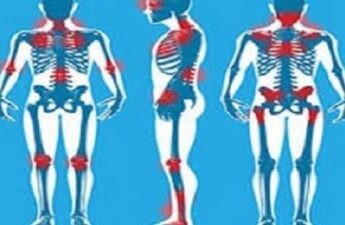Physical Changes in the Body of Fibromyalgia
While the syndrome is often misunderstood and large portions of it remain a mystery, research is beginning to find observable physiological reasons for it.
There’s certainly still a long way to go, however, Syndrome has a long history of misunderstandings and dismissals, so even a start on the project of finding more physical connections is a good step.
Fibromyalgia is often misunderstood, but there is real confusion about how it presents. The syndrome is characterized by widespread pain that usually affects the muscles or joints.
However, it can affect any area of the body, including the tissues. It results in back pain and muscle pain, a feeling of general tiredness and specific areas of sensitivity.
Despite having multiple points that are tender to palpation, called “soft spots,” the patient will have a normal neurological exam that gives no idea what is going on. Soft spots are specific points on the body and when pressure is placed on these points, it causes pain.
The syndrome most commonly affects otherwise healthy middle-aged women. However, it can affect women of different ages, as well as men and children.
In addition to pain, people with fibromyalgia often experience other symptoms, including sleep fatigue, other difficulties with sleep, and difficulties with memory and concentration. It can also cause intestinal disorders.
First, the syndrome may be responsible for both sleep disorders and sleep fatigue. The latter refers to the fact that sleep is often not relaxing or refreshing due to fibromyalgia. As a result, the syndrome is often confused with chronic fatigue syndrome.
The syndrome may also be responsible for something called “brain fog.” What this refers to is the inability to concentrate or think clearly that often accompanies the syndrome.
It is not clear that this is, in fact, directly related to fibromyalgia, or if it is caused by the chronic pain and fatigue that the condition brings.
Fibromyalgia can also be responsible for digestive disorders. It is not uncommon for the syndrome to cause intestinal irritations.
In addition to pain, the syndrome can also cause burning or itching sensations. This is a rare side effect, but it does happen occasionally.
Finally, it is not uncommon for people who suffer from fibromyalgia to also suffer from other psychological conditions at the same time.
This can be a problem, since fibromyalgia has a long history of being dismissed as “all in your head” by doctors and other health professionals in the past.
However, this is not to classify this syndrome as psychosomatic, just to acknowledge that there may be other things going on at the same time as fibromyalgia. Like the sleep disorders, it’s not clear that this is directly related to the syndrome, however.
It is not at all surprising if patients who suffer from chronic pain and are experiencing the other types of frustration that fibromyalgia can create, could also suffer from depression.
This is not a direct result of fibromyalgia, but rather the cause of the symptoms that the syndrome brings with it. That doesn’t make it any less of a result of fibromyalgia, it just means it won’t be treated as a direct result.
Pathophysiology of fibromyalgia syndrome
Pathophysiology
Pathophysiology or pathophysiology is the combination of pathology with physiology.
Pathology is the medical discipline that describes the conditions typically observed during a disease state, while physiology is the biological discipline that describes the processes or mechanisms operating within a patient.
Pathology describes the abnormal or unwanted condition, and pathophysiology tries to explain the physiological processes or mechanisms by which the condition develops and progresses.
Ultimately, pathophysiology can simply be described as the observable changes that occur physiologically due to a medical condition.
Pathophysiology is not the cause, but rather the effect that a condition has on the body.
This should be understood as distinct from etiology, which is the term used for causes.
Pathophysiology does not describe the causes of anything, which in terms of fibromyalgia, is good, since the causes of the syndrome are unknown.
Pathophysiology of Fibromyalgia
So what changes in the patient’s body are caused by fibromyalgia? This will naturally be difficult, since almost everything about this syndrome is shrouded in uncertainty.
However, there are at least some aspects of the disease that are observable and can therefore be viewed as part of the pathophysiology of the syndrome.
The most obvious and observable symptom is pain. This is understood as a problem with hypersensitivity to stimuli in general, which later manifests as pain.
This hypersensitivity is possibly the result of neurobiological changes or “hypervigilance.”
The latter is a psychological syndrome



